Business formal is often confused or interchangeably used with business casual.
It doesn’t harm to mistake the two while talking. However, it will hurt if you make the same mistake with your attire.
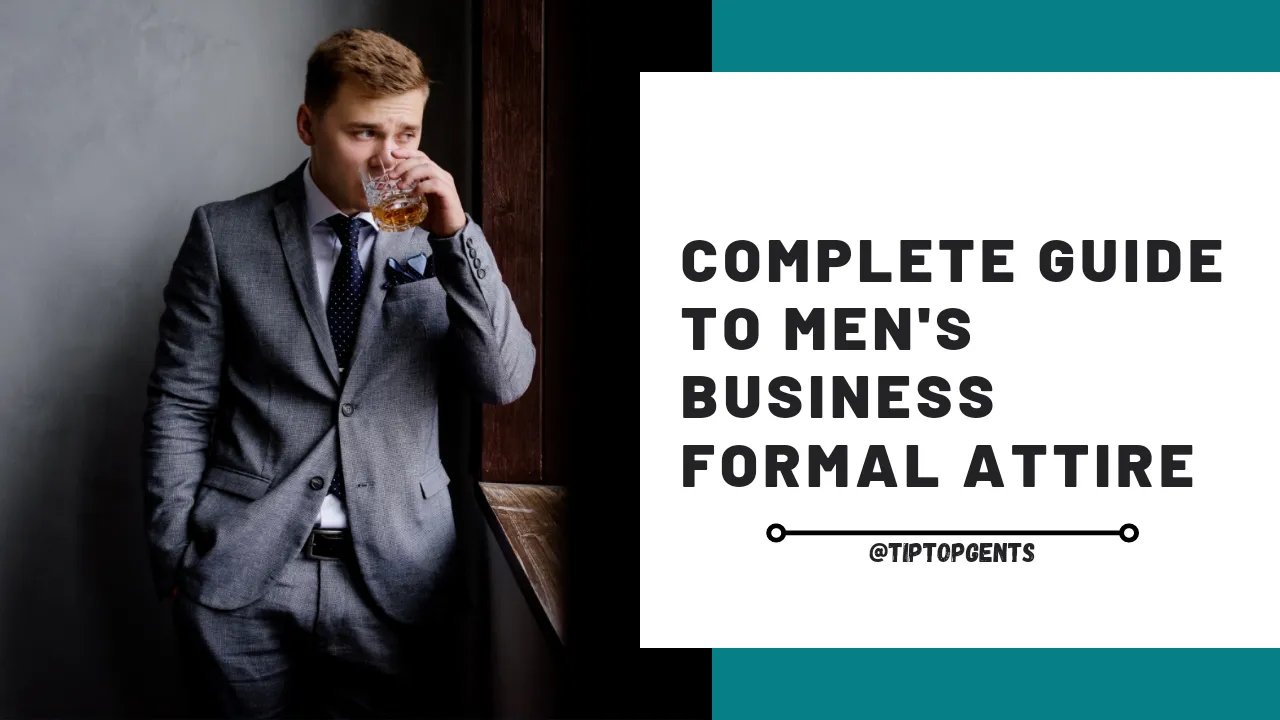
Professional business wardrobes became popular with the exponential rise in office jobs.
It is still trendy today, even though it has been modified to business casual in specific industries.
Let’s see what defines business formal, so you never have to be confused again.
What is Business Formal Attire?
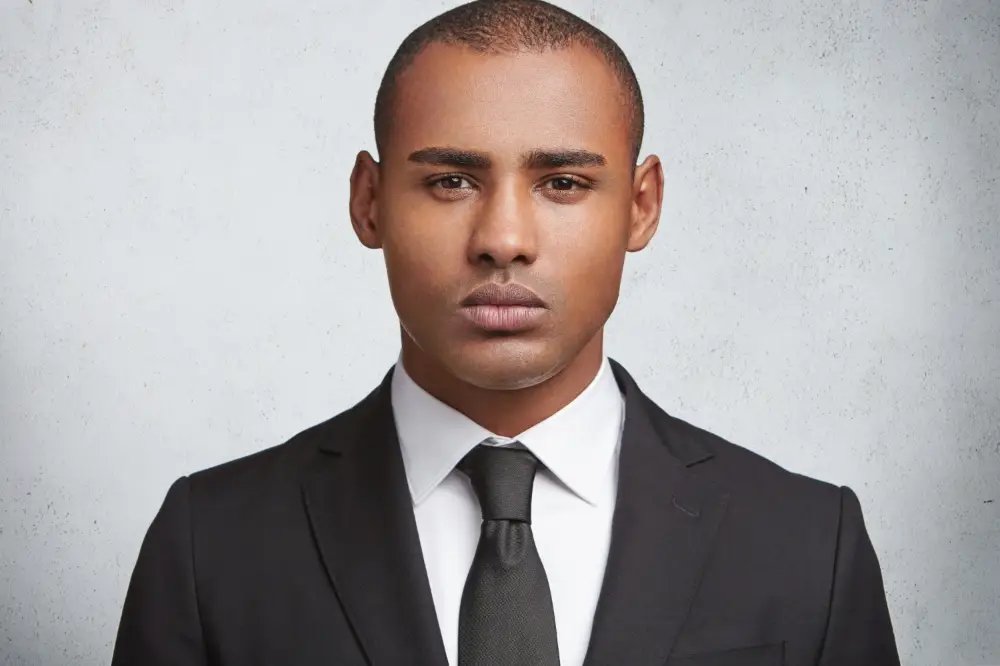
After the two world wars, the world saw a rise in office jobs. This paved the way for the business formal attire to make its mark.
Consequently, more and more men started dressing up for the office. Since businesses wanted their employees to look professional in a suit, it became the norm.
This was eventually categorized as business formal. Moreover, business formal became the symbol of success. Therefore, anyone wearing this dress code was believed to be doing financially good in life.
In terms of formality, it only falls above business casual attire. Nevertheless, it has some strict basic guidelines. The rest is in the hands of your workspace and what they require you to wear.
Business Casual vs. Business Formal Attire

Both business casual and business formal are office dress codes. However, while business formal has stricter rules, business casual is becoming more popular.
Head-to-head, business formal is exceptionally conservative and refined. Contrarily, Business casual is its more contemporary and relaxed counterpart.
The rules around wearing a suit help us distinguish between the two. While it is mandatory to wear a suit for business formal attire, business casual has no such constraint.
In fact, business casual is open to a myriad of interpretations. But, on the other hand, business formal allows little to no room to veer off from the rules.
Nonetheless, since both attires are for the office, you can’t wear anything flashy.
Workspaces require downcast business wear that reflects your seriousness rather than trendiness.
If you aren’t sure about the exact guidelines for your workplace, ask around.
If you still don’t have enough information for the dress codes, make it seem like you at least tried by sticking to formal.
Business Formal Attire
The rules for business formal attire haven’t changed in decades.
The main aspects of this attire include the primary suit. The remaining essentials, such as the shirt, tie, dress shoes, and accessories, complement the suit.
Let’s look into each element from a business formal perspective!
Suits
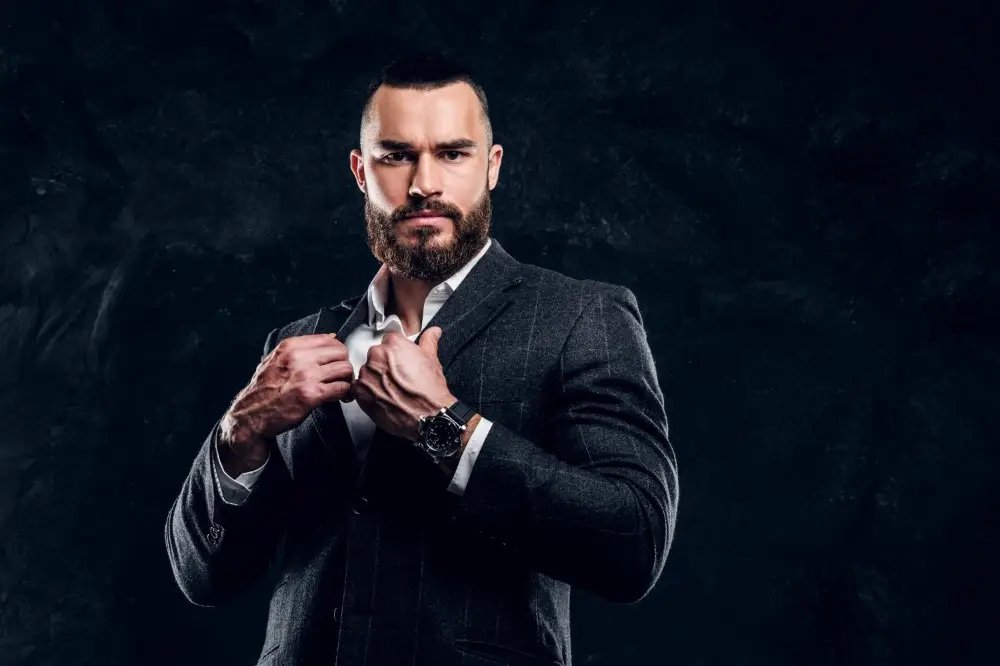
Any professional working man must have a dark-colored, two- or three-piece suit in his closet.
The traditionally popular options are navy or charcoal grey suits. Since lighter suits fall more on the casual end, I’d suggest you keep them in for a business casual day.
If you want to add a bit of excitement, opt for a fabric with understated pinpoints or pinstripes.
Keep the buttons to a maximum of three for a single-breasted suit. Contrarily, a double-breasted jacket would require either four or six buttons.
Moreover, you can only wear two lapel styles for business formal attire. These include notch and peak lapels with a preference for the notch style.
This is because the notch is the traditional favorite that makes any man look sophisticated yet flexible. Whereas, while the peak lapel (known as the “power” lapel) falls more on the formal side, it makes you appear authoritative and influential.
Lastly, the suit matching pants must have a flat front or pleats. I would recommend inward-facing pleats because these dress pants make sitting a pleasure which is excellent for the office.
Shirts
If you are a fashionable man, you already have a white, long-sleeved button-up dress shirt.
Luckily, this is the foundation for any business formal attire. However, a light blue shirt can also add excitement to the appearance.
It is also okay to wear a textured or subtly engrained shirt. Make sure the shirt has either French or barrel cuffs because that is what the dress code requires.
I would recommend buying French cuffs with formal shirts as they are more professional. Moreover, French cuffs allow you to express your fashion-forward personality. However, keep them subtle and non-flashy.
Lastly, getting the right fit for your dress shirt is vital. Nothing else I mentioned above will matter if the shirt is too tight or too loose on your body.
Ties
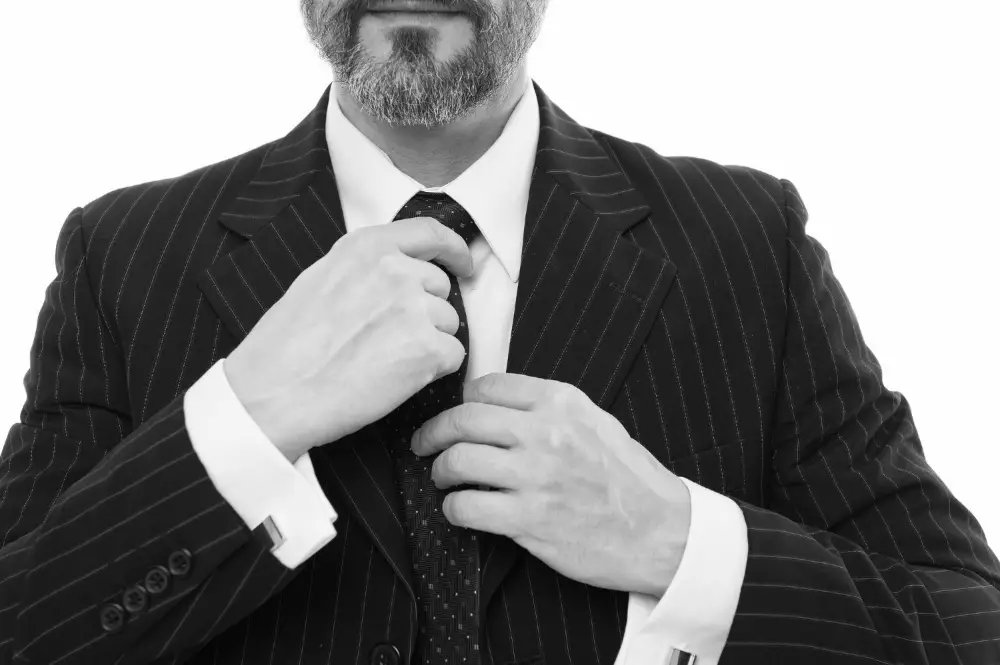
A conservative tie is a must for standard business formal attire. This is why most offices make ties a mandatory part of the dress code.
However, you must stay wary of bright, flashy ties. Keep the colors neutral to avoid drawing too much attention.
Your safest option is a dark-colored solid black tie that complements a crisp black suit. This is peak business formal.
You can obliviously mix other colors. However, ensure the colors of your tie, shirt, and suit complement each other.
Moreover, it wouldn’t harm to experiment with some small patterns or stripes. But keep it subtle.
Preferably get a silk tie because it is the perfect fabric for a formal tie. Mixing a knit tie or grenadine for day wear works too. However, don’t fall towards any other texture.
Dress Shoes
Dress shoes are a vital aspect of office wear. Fortunately, footwear for business formal offers numerous possibilities.
You first have to find the right shoe type, which in this can either be Oxford, Derby, or Loafers. Once done, the next vital step is to match the shoes with the suit.
Oxfords are a classic footwear choice with any suit. Black Oxfords will never fail you for business formal because they are incredibly versatile.
Derby shoes are only second to Oxford’s due to the slight decrease in formality between the two.
Make sure it’s a plain-toe derby because those are the most formal.
And if you think neither of the two shoe types works for you, go for loafers. Despite the relaxed look of this shoe type, a Venetian loafer can still go with business formal.
Wear it on days you want to be your most relaxed self. I wouldn’t recommend loafers for big meeting days or even interviews.
Accessories
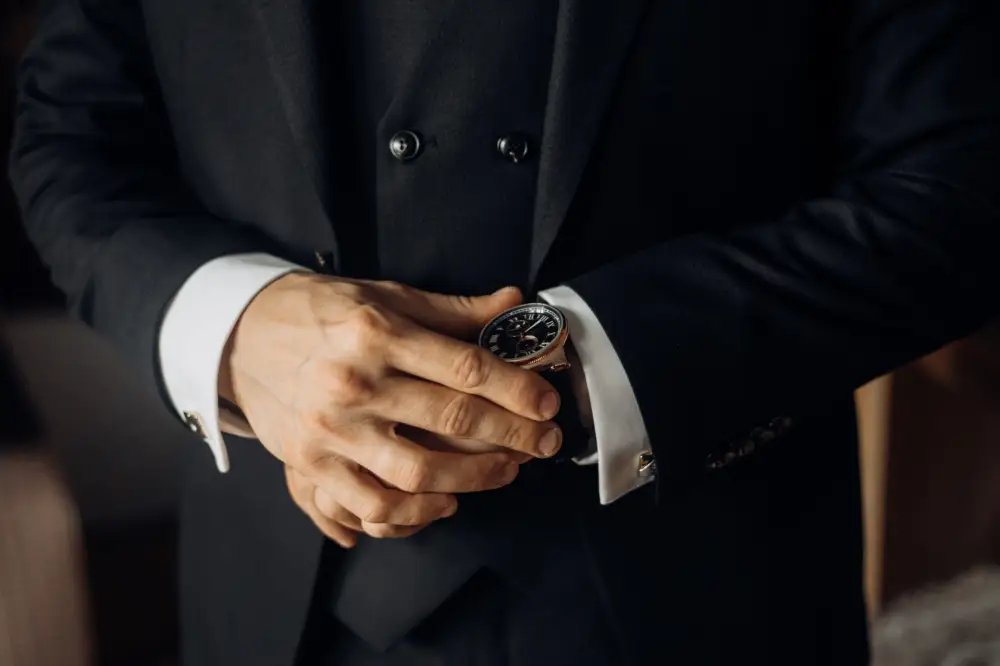
Presenting a professional look is always incomplete without accessories. In fact, it is the accessories that help reflect your true personality.
But before that, make sure your attire is well-ironed. The neckwear should be neatly in place, and consider a pocket square to contrast or harmonize your whole ensemble.
Adding a simple watch is appropriate for business attire. Make sure to match the watch strap with the belt if it’s leather.
Also, the belt should match the shoe color. It all comes down to selecting and matching everything with the other for a chic business formal look.
Lastly, avoid any kind of visible piercings because they look unprofessional. Also, wearing an underpowered cologne is never a bad idea.
Tips for Dressing for a Formal Business Meeting
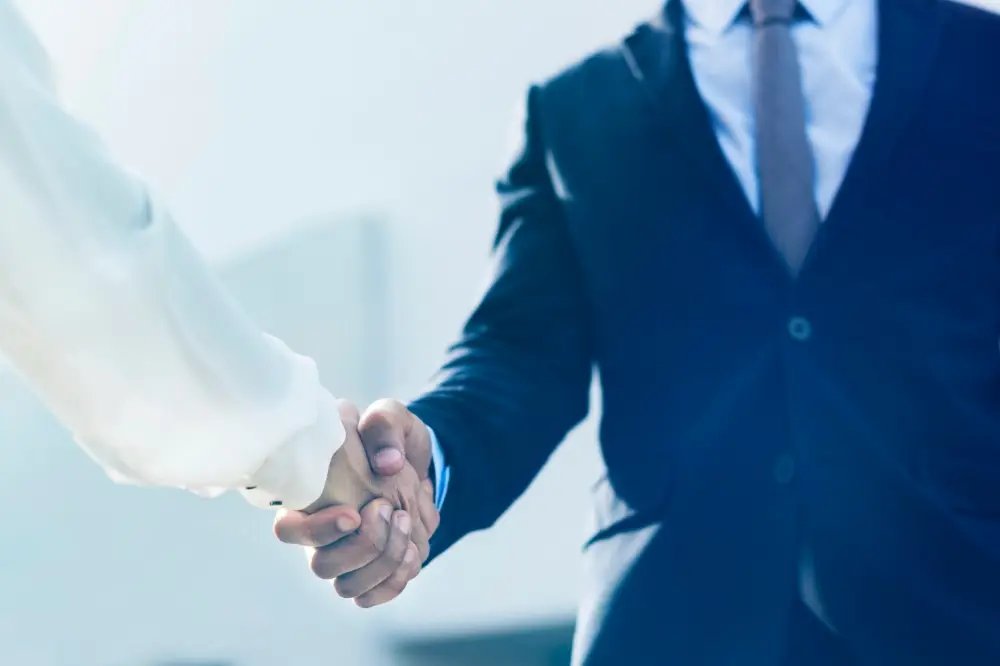
Business meetings need you to bring your A-game when it comes to dressing. Since these take place in a highly professional setting, your persona, outfit, and style should all reflect that.
First, choose a dark solid suit that is not too loud or flashy. Contrast a formal shirt with the suit and ensure both pieces are perfectly ironed.
Make sure the suit fits well. Also, before you put these on, make sure you are well-groomed. Shower, cut your nails, and preferably get a haircut too.
Choose formal shoes such as Oxfords or Derbys to complement the classic look. Make sure they are adequately polished before you enter the meeting room.
Add a watch to your wrist to look more professional. You can either opt for a leather or metal strap.
Moreover, a tie and belt are a must if you want everyone to take you seriously.
Dressing for a Business Professional Boardroom Meeting

Boardroom meetings are no joke. Therefore, you must take your outfit as seriously as anything else.
The first step is to understand the dress code. Does the industry allow business casual or business formal?
If you are unsure, always go for business formal because it’s the safest choice.
You must dress to impress, not attract. As a result, keep the suit dark and solid. Wearing a formal contrasting shirt.
I recommend you stick to black, navy, or charcoal grey for suit colors.
The best shirts to go with these shades are white, light blue, or pale pink. But it’s a board meeting, so why not keep it simple with a black suit and white shirt?
Similarly, your shoes should either be Oxford’s or Derby’s. Carry a leather briefcase or bag that matches the shoe color. Stick to brown and black in this case.
Your outfit looks chic. Brush your hair and show the board you have what it takes to lead the company to success.